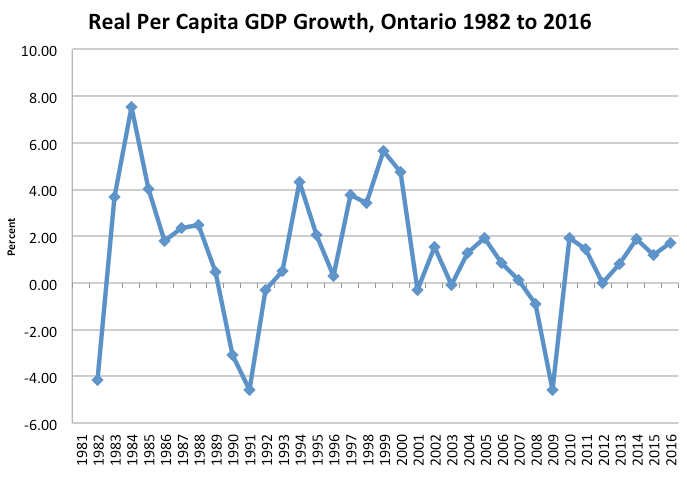Economic bright spots no justification for increased government spending in Ontario
There’s some recent evidence that Ontario’s economy is igniting and may be poised to once again become Canada’s economic engine.
Indeed, Canada’s major banks have released forecasts that Ontario will lead the country in economic growth this year. The unemployment rate in Ontario is the lowest it’s been in 16 years and is also well below the national average. The stronger economy, with accompanying increases in tax revenue, was a major factor in the province balancing its budget this year.
The urge to celebrate has been infectious in Ontario’s government and the improving economy is now a justification in driving the continuing activist agenda of the Wynne government. The “good news” is a factor in driving increases in health spending, commitments to universally accessible childcare, a basic income pilot project and new labour legislation that includes substantial increases in the minimum wage.
It may be premature, however, to justify increased government spending on this good economic news.
To start, much of the economic growth has been concentrated in the GTA and is rooted in the real estate sector, which has begun to cool. Ontario’s Financial Accountability Officer (FAO) Stephen LeClair forecasts that economic growth will slow and there are uncertainties for Ontario’s economy given the policy directions of the Trump administration regarding trade with Canada. As a result, the FAO says that Ontario’s deficit problem is not over yet.
However, what’s more disconcerting for Ontario is that when the economic growth of the last few years is adjusted for both inflation and population, Ontario’s economy is still doing quite poorly by historical standards. Indeed, the performance of the last couple of years is part of the growth malaise that has marked Ontario since the start of the 21st century.
The chart below plots the growth rate of Ontario’s real per capita GDP from the early 1980s to 2016 using GDP in 2007 constant dollars from Statistics Canada (v62790361). As the chart shows, the last time real per capita GDP growth in Ontario cracked 2 per cent was in 2000.

Economic growth indeed fluctuates from year to year with recession years producing negative per capita income growth and non-recession years much higher growth rates. For the period 1982 to 2000, annual real per capita GDP growth rates average 1.8 per cent and ranged from a high of 7.5 per cent to a low of -4.6 per cent. For the period 2001 to 2016, growth rates averaged 0.6 per cent and ranged from a high of 1.9 per cent to a low of -4.6 per cent.
Since 2000, real per capita income growth in Ontario has matched the lows of the pre-2000 period but not the highs, and as a result overall average growth remains quite low. In the end, economic productivity remains low, which translates into lower wage and income growth for Ontarians. Despite some improvement, Ontario’s economy still has much work ahead of it.
Author:
Subscribe to the Fraser Institute
Get the latest news from the Fraser Institute on the latest research studies, news and events.

